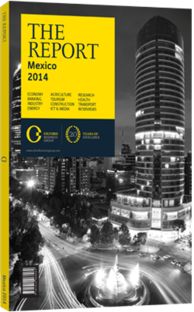OBG talks to Claudia Ruiz Massieu, Minister of Tourism

Interview: Claudia Ruiz Massieu
Which countries should be prioritised in terms of increasing connectivity and tourism flows?
CLAUDIA RUIZ MASSIEU: Economic and demographic ties, as well as geographical proximity, have combined to make the US our principal market. In 2013, 55% of international air travellers were from the US. We have also had high numbers from Canada, the UK, Spain, Argentina, Brazil, France, Germany, Colombia and Italy. We plan to target emerging markets such as China, which according to the UN World Tourism Organisation became the world’s biggest spender on tourism in 2012, spending a total of $102bn. Although the Chinese market has not yet had a significant impact in Mexico, we are working strongly to develop an attractive offer to this market, especially given that our bilateral economic ties are increasing. We also expect a rise in the number of tourists from other Asian markets, including Japan, Singapore and Korea. Similarly, the number of Russian tourists visiting Mexico during the first seven months of 2013 was 39% higher than in 2012.
How can the industry be diversified without losing its strengths in the sun and beach segment?
RUIZ: Tourism in Mexico has historically tended to grow at a steady rate due both to its geographical location and the quality of the attractions and sights it has to offer. However, the characteristics of the industry as well as the profile of the average tourist are gradually changing. Until today, most of the industry has successfully relied on promoting Mexico as a sun and beach destination. However, this focus undersells the country’s potential as a destination for visitors. Our effort to diversify the tourist industry will offer tourists a wider array of things to see and do, while also providing development opportunities for different regions of the country. For the next few years, we anticipate greater demand in areas where we possess significant competitive strengths such as cultural and nature tourism.
Further to this, we also aim to take full advantage of Mexico’s potential in medical tourism, a segment that has shown rapid growth in recent decades. The country has sufficient infrastructure to provide for people looking for a wide range of medical services, particularly from the US and Canada. For instance, Mexico has cutting edge human capital in the medical field, 15 medical clusters situated around the country and more than 120 hospitals certified by the Health Ministry, the criteria of which is up to the standards of those used by the Joint Commission International.
However, various government agencies are undertaking joint efforts to consolidate high-quality services, in order to guarantee certainty and confidence among medical tourists, thus enhancing demand in this segment. We have high hopes and expectations for growth in this sector, as Mexico shares a border with the US, which is the world’s biggest spender on health. Equivalent treatments and procedures can be found 50-90% cheaper in Mexico than in the US.
Which sectors do you foresee having the best investment opportunities for foreign players?
RUIZ: Investments worth $8.6bn were announced in 2013, spread over 176 projects, from hotel and timeshare developments to airport infrastructure, restaurants, recreational parks, golf courses, marinas, clinics and retirement communities, among others. These projects are in 27 prime locations, comprising 11 cities and 16 sun and beach destinations, in 17 states. The government’s commitment to the development and diversification of tourism is reflected in the strong confidence locally and internationally to invest in Mexico.
Sun and beach will not be neglected, but we will shift our emphasis to advertising our potential in cultural, eco, adventure and medical tourism, and promote the investment opportunities in these segments. Mexico can expect to see aggressive investment policies to improve its communications and urban infrastructure, including ports, airports and highways. Though these may not traditionally be associated with tourism, they will still have a big effect on the success of the sector.
You have reached the limit of premium articles you can view for free.
Choose from the options below to purchase print or digital editions of our Reports. You can also purchase a website subscription giving you unlimited access to all of our Reports online for 12 months.
If you have already purchased this Report or have a website subscription, please login to continue.

